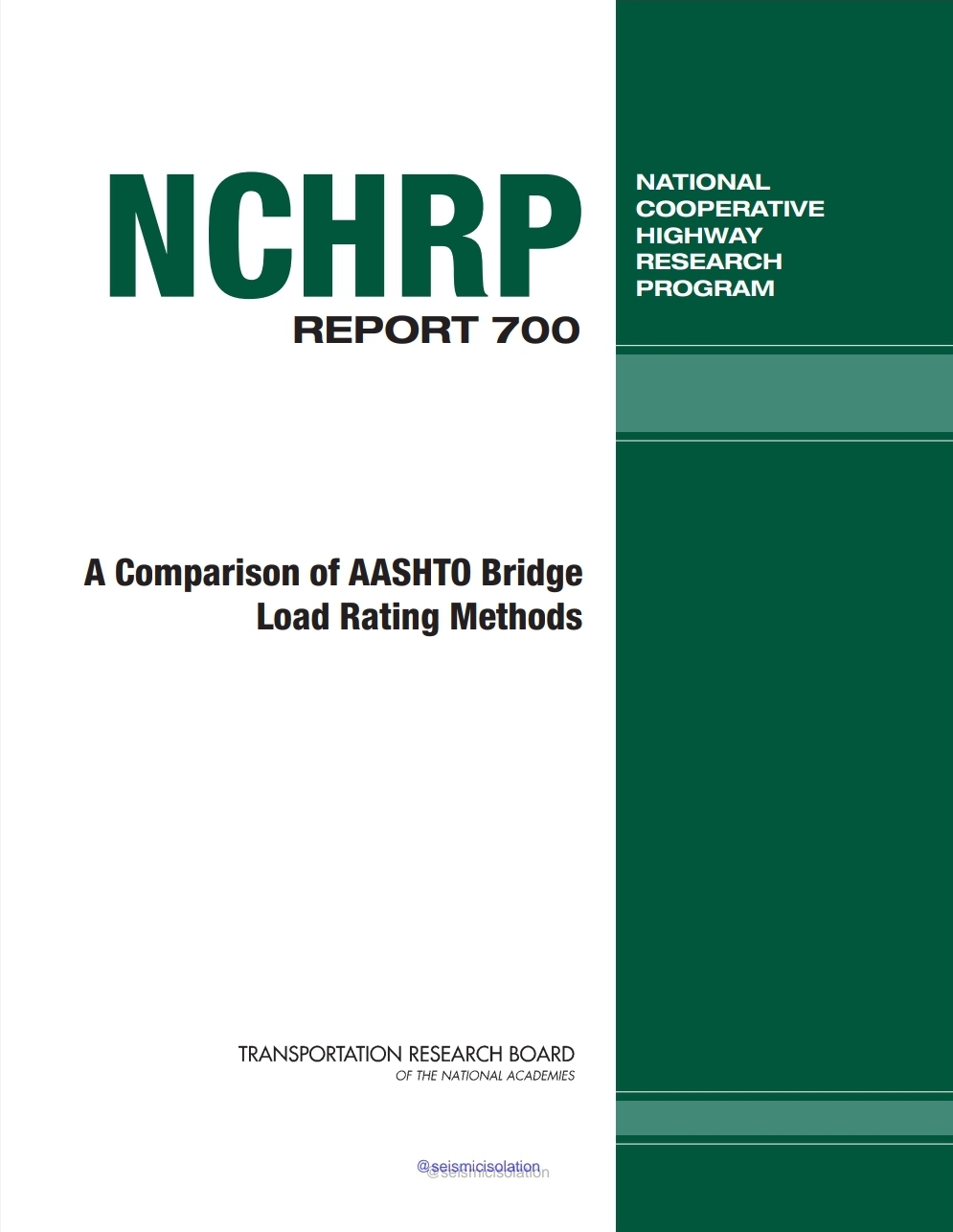A Comparison of AASHTO Bridge Load Rating Methods
Systematic, well-designed research provides the most effective approach to the solution of many problems facing highway administrators and engineers. Often, highway problems are of local interest and can best be studied by highway departments individually or in cooperation with their state universities and others.
However, the accelerating growth of highway transportation develops increasingly complex problems of wide interest to highway authorities. These problems are best studied through a coordinated program of cooperative research. In recognition of these needs, the highway administrators of the American Association of State Highway and Transportation Officials initiated in 1962 an objective national highway research program employing modern scientific techniques. This program is supported on a continuing basis by funds from participating member states of the Association and it receives the full cooperation and support of the Federal Highway Administration, United States Department of
Transportation.
The Transportation Research Board of the National Academies was requested by the Association to administer the research program because of the Board’s recognized objectivity and understanding of modern research practices. The Board is uniquely suited for this purpose as it maintains an extensive committee structure from which authorities on any highway transportation subject may be drawn; it possesses avenues of communications and cooperation with federal, state and local governmental agencies, universities, and industry; its relationship to the National Research Council is an insurance of objectivity; it maintains a full-time research correlation staff of specialists in highway transportation matters to bring the findings of research directly to those who are in a position to use them.
The program is developed on the basis of research needs identified by chief administrators of the highway and transportation departments and by committees of AASHTO. Each year, specific areas of research needs to be included in the program are proposed to the National Research Council and the Board by the American Association of State Highway and Transportation Officials. Research projects to fulfill these needs are defined by the Board, and qualified research agencies are selected from those that have submitted proposals. Administration and surveillance of research contracts are the responsibilities of the National Research Council and the Transportation Research Board.
The needs for highway research are many, and the National Cooperative Highway Research Program can make significant contributions to the solution of highway transportation problems of mutual concern to many responsible groups. The program, however, is intended to complement rather than to substitute for or duplicate other highway research programs.
This report highlights the work accomplished under the AASHTO sponsored project, “Evaluation of Load Rating by Load and Resistance Factor Rating.” Administered by NCHRP as Project 12-78, the research has provided proposals for changes to the AASHTO Manual for Bridge Evaluation through the extensive data analysis of 1,500 bridges of varying material types and structure on figurations. The bridges were analyzed using the AASHTO-WareTM Virtis® software. To select the 1,500 bridge sample and the live loadings considered in the study, the following tasks were performed:
• Reviewed the FHWA National Bridge Inventory (NBI) database to determine an appropriate cross section of material types and bridge configurations. The inventory was broken down into several categories including year built, bridge type, material type, and maximum span length.
• Solicited AASHTOWareTM data files from states during the survey period. In all, states provided over 18,000 bridge data sets for use on the project. From this set, the 1,500 final bridge domain was selected.
• Developed utility software to breakdown the 18,000 bridge database and select bridges that closely matched the cross section determined from the NBI data.
• Determined a set of live load vehicles to be used in the analysis of the 1,500 bridges based on legal and permit vehicle configurations submitted by the states surveyed. From the over 300 vehicles submitted, eight vehicles were selected in the final phase in addition to the AASHTO legal loads (Type 3, Type 3S2, and Type 3-3) and the Load Factor Design (LFD)and Load and Resistance Factor Design (LRFD) vehicles (HS-20 and HL-93, respectively).
Once the bridge domain and vehicles were selected, the AASHTOWareTM Virtis® was used to analyze the bridges. Parameters for using the software were:
- Version 6.1.0 of the AASHTOWareTM Virtis® software with the Wyoming Transportation Department BRASS GIRDER software engine for both load factor rating (LFR) and load and resistance factor rating (LRFR).
- Both LFR and LRFR ratings were performed on all bridges and the results for the critical moment and shear ratings were reviewed.
- The software was run in both LFR and LRFR for the eight permit/legal loads, the three AASHTO legal loads, and the design loads.
- In all, 3,043 girders from 1,500 bridges were analyzed using 12 vehicles for both LFR and LRFR, constituting more than 73,000 separate analysis runs.
- The results of these analysis runs were organized by critical shear and moment ratings and relevant data was extracted using the process developed in NCHRP Project 12-50
DOWNLOAD :- HERE
